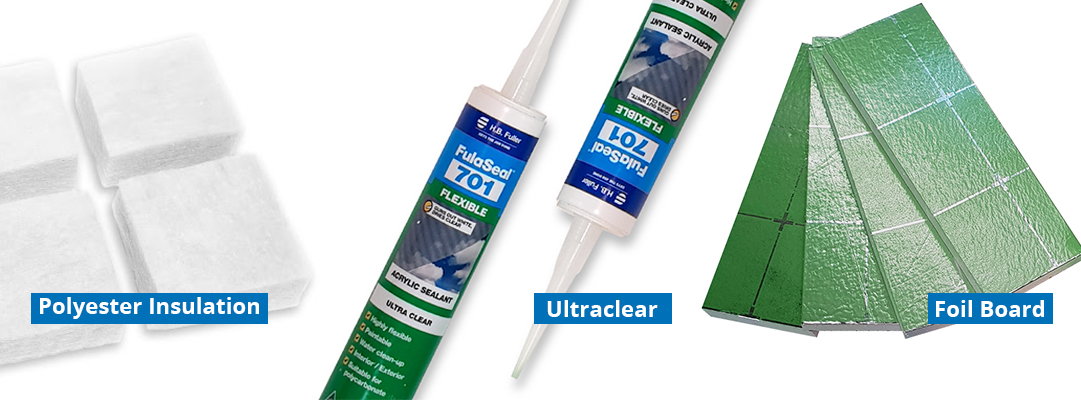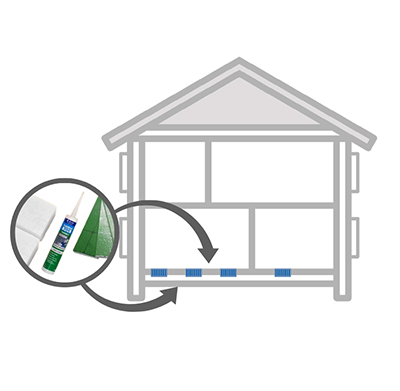Goodbye Heating Vents
Seal Those Holes and Boost Your Home’s Efficiency
You’ve made the smart move to get rid of that old gas heating system and pulled out the underfloor ducting—great choice! However, this has left you with a new challenge:those open vents and floor holes that are letting in cold draughts, dust, and other unwanted elements from the subfloor. It’s time to finish the job and permanently seal up those gaps.
Introducing the Goodbye Heating Vents DIY project—a quick and satisfying way to close off those vents and transform your home into the cosy, energy-efficient space it deserves to be. Ready to say goodbye to drafts and hello to savings? Let’s dive in!
Why Sealing Your Heating Vents Matters
Energy Efficiency: With your gas system gone, those open vents are essentially escape hatches for your warm or cool air. Sealing them up ensures conditioned air stays where it belongs—inside your home, not slipping out into the void below.
Improved Comfort: Drafts from exposed vents can turn your home into an uncomfortable, breezy space. Sealing them will help maintain a consistently cosy environment, whether it’s the middle of winter or a scorching summer day.
Cost Savings: Every bit of warm or cool air that escapes through unsealed vents is money wasted. Sealing them up is a simple, effective way to reduce energy costs and keep more of your hard-earned cash..
Air Quality: Those open vents don’t just let out your conditioned air—they also allow dust, pollen, and other allergens to enter from the subfloor. Sealing the vents will help keep your indoor air clean and healthy, so you can breathe easier.
Getting Off Gas: Seal the Holes, Keep the Heat
Transitioning away from gas heating is a big step toward a more sustainable home, but it often leaves behind one pesky problem—holes in your floor where the old ducting used to be. These gaps can let in cold drafts and all sorts of unwanted elements from the subfloor. But don’t worry, sealing those holes is easier than you think!
Our Goodbye Heating Vents kit makes it easy to seal those pesky gaps and prevent heat loss, keeping your home warm and cosy without relying on an old gas system. By sealing the vents, you’ll not only cut ties with fossil fuels, but also enjoy a more comfortable, efficient, and environmentally friendly home.

The DIY Goodbye Heating Vents Process
If you are a “Watcher” – here are the installation videos
If you are a “Reader” – here are the installation instructions (but really, seriously, it’s much better if you watch the videos).
Locate and Assess the Size of Vents
Count all the open heating vents left behind after removing the gas ducting. Measure the vent length and width and be sure to select the right option from the website. There are two standard sizes of vents in Australia: Large 155mm x 355mm or Medium 110mm x 305mm. And remember to check for the return air vent! Order the right number of kits (4 vents per kit) – and remember we have spare parts if you need any extras.
Sealing the Vents
Use a screwdriver to remove the vent cover, then clean the area around the vent opening to create a smooth surface. Insert the polyester square into the duct opening. This is to stop rodents from gaining access to your home. Rodents don’t like polyester insulation, so it’s a good product to use. Then install the polystyrene rectangles on top of the polyester in the ‘boot’ of the duct. Then use the Ultraclear to seal around the edge of the polystyrene to make the duct completely air tight.
Post-Sealing Check
Once you’ve sealed the vent, replace the cover and check for any remaining drafts using the back of your hand, incense stick or T light. That’s it. You are done.
IMPORTANT: Only seal heating vents where your gas ducted system has been decommissioned.
Case Study/Success Story
“We recently removed our old gas heater and were left with a bunch of open vents. After sealing them with the Goodbye Heating Vents Kit, our home felt immediately warmer, and our energy bills have dropped noticeably. It was easy to do and made a huge difference!” — Mark, Sydney
Recommended Products
Recommended Products
Sealing your decommissioned vents from your gas heating is super easy:
![]() Shop the Goodbye Heating Vents
Shop the Goodbye Heating Vents
![]() Or get the individual components here
Or get the individual components here
![]() Still unsure? Try Find and Fix My Draughts to identify other problem spots
Still unsure? Try Find and Fix My Draughts to identify other problem spots

Common Questions and Troubleshooting
How long does it take to seal a vent?
Sealing a vent typically takes about 15-30 minutes.
Can I seal active vents?
No, this method is only for vents that are no longer in use.
What if I have multiple unused vents?
No problem – simply repeat the sealing process for each vent to ensure a complete seal.
Now What?
You’ve already done the hard part by removing that old gas system—now it’s time to finish the job and seal up those vents. With the Goodbye Heating Vents Kit, you can easily close up those gaps and create a warmer, more energy-efficient home.
Ready to say goodbye to those drafts and hello to a more comfortable, cost-effective living space? Now’s the time to get started. Our Goodbye Heating Vents Kit makes it simple to seal up those unwanted vents and start feeling the difference in every room of your home.
Related Resources
Link to Related Articles:
- How to Draught-Proof Your Home: A Comprehensive Guide
- Energy Efficiency: The Best Tips for Reducing Your Bills
How-to Videos:
